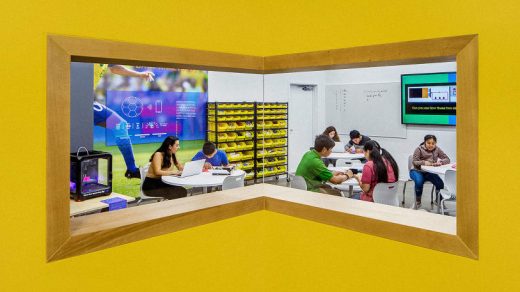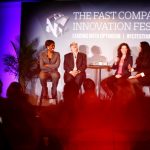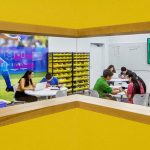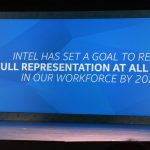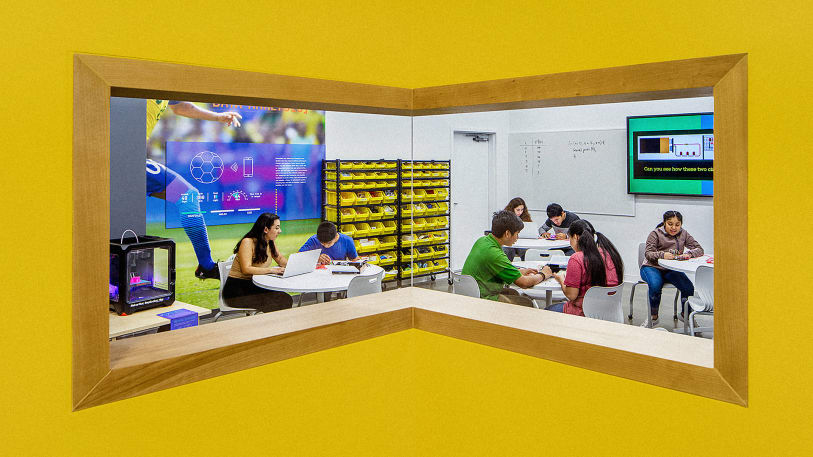How Google’s Code Next Lab Is Tackling Tech’s Diversity Problem
Inside Google’s Code Next lab in Oakland on a typical Tuesday afternoon, a 13-year-old might be opening up an old gadget–maybe a calculator–and trying to put the pieces back together in a way that hasn’t been done before. On a Saturday, students might be programming a robot or 3D-printing a chess set.
The lab–a 1,500-square foot space across from Oakland’s Fruitvale BART station–is particularly designed to reach black and Latino students, in 8th to 10th grades, about half of whom don’t have access to computer science classes in school. It’s one part of a larger strategy to help solve tech’s diversity problem. Only about 7% of tech workers are black and 8% are Latino (the overall population is 12% black and 16% Latino). Even when tech companies have pushed for more diversity, the numbers have mostly stayed the same. At Google, employees were 2% black and 3% Latino in 2016–the same stats as 2014, despite two years of effort.

Starting with teenagers is one step. “The numbers across all of tech are kind of messed up,” says Errol King, Google’s New York-based program manager for Code Next. “The numbers across university enrollment are messed up. The numbers across AP computer science enrollment are low. The team sat down and said, ‘Where do we need to start?’ And we just kept going backward to see what the source was. In that, we arrived at the 13-year old, basically.”
One obvious problem was a lack of access to technology in the neighborhoods where many minority students live. “We drew on our own experiences of having to leave the community to access resources and opportunities,” says April Alvarez, the Oakland-based experience manager for the program. “We really wanted to change that and to situate ourselves in the community.”
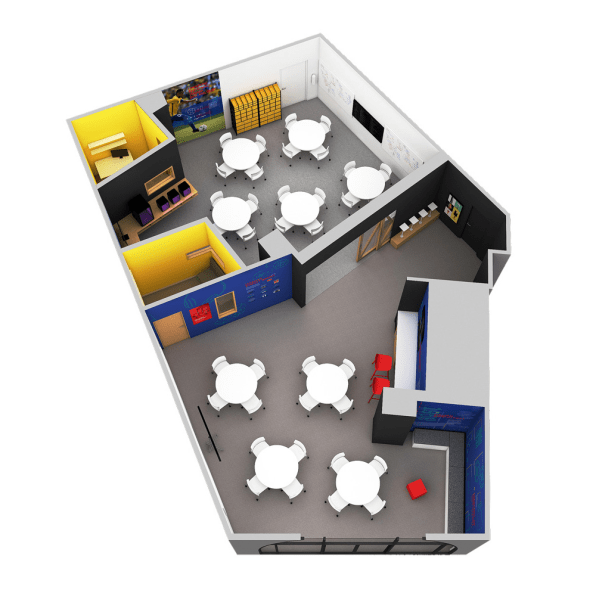
Working with community organizations and the design firm Kurani, they developed a space that would draw students in, whether or not they had been interested in technology in the past. The walls are plastered with floor-to-ceiling images of people like Melba Roy, a black woman who led a team of NASA’s human computers in the 1960s, and Guillermo Camarena, the Mexican inventor of a type of color television screen. A deconstructed set of Beats headphones sits on display, showcasing its technological innards. 3D printers and circuit boards are within easy reach.
“We knew that space would be critical to inspiring these students,” says Danish Kurani, founder of Kurani. “You’re not just throwing them in any traditional classroom or any banal learning space but it’s really something special, something inspiring, that could help build that interest in computer science, build confidence in the students, and really also help them see why it’s relevant to their lives and why it’s a worthwhile endeavor or career path.”
Rather than focusing strictly on coding and parking students in front of laptops, the lab was deliberately filled with tools for making physical objects. “We did a listening tour when we first started designing the program, and we heard that kids didn’t have access and exposure to technology,” says Alvarez. “There was almost sometimes some fear and some demystifying that we had to do around interactions that kids have with technology. We know that a curriculum that focuses on computational making gets kids really excited and engaged. That was the first step.”
Code Next works with local partner organizations to recruit students, who can attend the program for free. The program prioritizes students who show a passion for something in their lives, though they don’t need to have a background in tech. “We look for kids who are just passionate about something–dance, singing, any kind of extracurricular where they just sort of put themselves into it,” says King. “We felt like then that thing that they love could be seen or rendered through technology.”
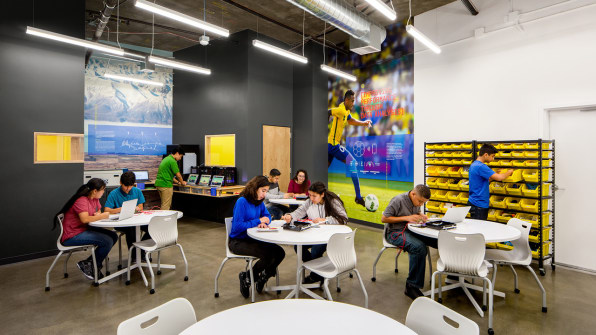
The details of the lab are designed to inspire more curiosity about physical design. The ceiling was torn away, so ducts, pipes, and wiring are visible. Screws in the windows are exposed. Sliding doors to one classroom have clear panels that reveal the structure of the wooden frame.
“We wanted to almost passively teach students that things are made–the environment around them was constructed and built and designed, and you yourselves are capable of doing that,” says Kurani.
One area of the lab is designed to represent the future. It’s intentionally left blank, so students can display their own work on physical platforms or a touchscreen with a digital portfolio. “It’s really sending the message that look, you guys are the future of this industry,” he says. “You guys are the future of computer science and technology. So we’re allowing you to project: What do you think the future should be for these industries? How do you think computer science and tech should evolve going forward? What problems should it address and work towards solving?”
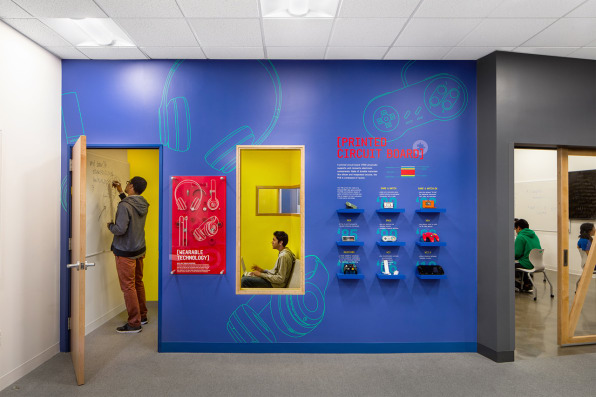
As students work on projects, it’s a way for them to experiment and iterate with technology without the risk of failure or a low grade. “If you take a computer science class in college and you bomb it . . . it’s such a high-risk environment,” says King. “You do it in high school, it’s a high-risk environment. We wanted to create an environment where you could actually interact with tech, play with it, and explore it, where you could make something really amazing, but if it wasn’t the thing that you wanted to do as well, that’s okay, there’s no consequence there. I think that’s the space in which we can help young people come to love the field.”
Students are also building networks. In New York, where Google currently operates the program out of its own offices (a separate lab will soon be built in Harlem), students from all over the city are meeting, making friends, and starting to hang out outside of workshops. “That’s the basis of social capital,” King says. “That’s when 10 years down the line, you call that person.”
Teachers and other organizations are beginning to visit both the Oakland and New York programs to learn from the successes it’s had since it launched in 2016: 97% of students have said that the lab provides a better space for hands-on learning than their school, and 80% said it has given them the confidence to pursue a tech career. Google hopes to share the curriculum and approach widely, so it can be replicated elsewhere.
Schools may eventually begin to look more like the lab. “I think it’s one thing to just have a singular “maker space” or a lab for making at a school,” says Kurani. “But I think the real push will be when schools realize that all of their spaces need to start accommodating all the different types of learners they have. It can’t just be that 95% of our school is one way, and 5% of our campus or environment is supporting this type of learning.”
King agrees. “User experience and education need to get married,” he says. “Every day, in school, there should be a double bottom line of, ‘Have they learned what we wanted them to learn?’ and, ‘Do they want to come back tomorrow?’ If we don’t do those two, then we kind of missed the point.”
(71)

